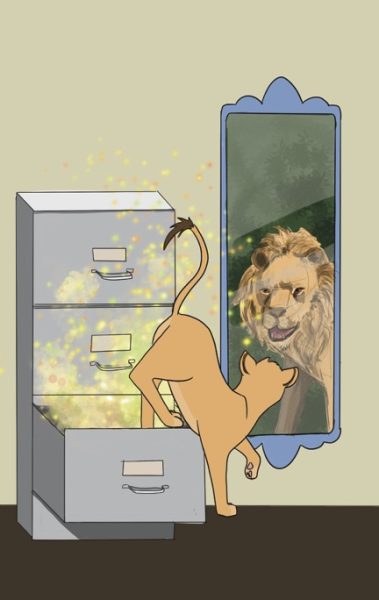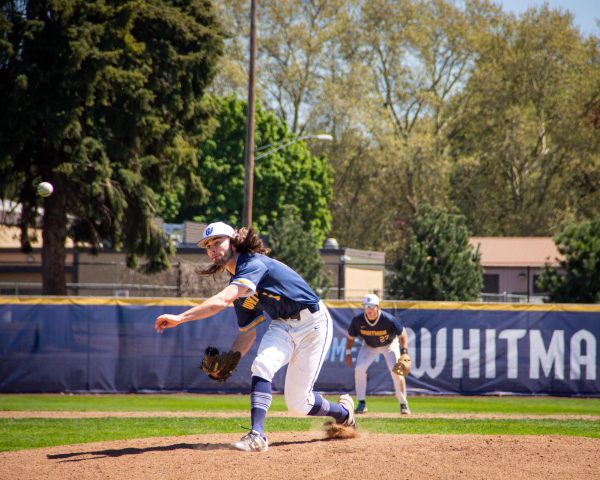ASWC 2.0
November 12, 2018
The restructuring of ASWC remains a prevalent topic within the Whitman student body, with many discussions taking on a more tangible form. Gautam Produturi, the interim Facilitator for ASWC, recently drafted “A Proposal to Restructure ASWC” and presented it during a Senate meeting on November 11.
The proposal “represents [Produturi’s] own synthesis of these ideas and criticisms [on restructuring],” and does not serve to represent the voices of all members of ASWC nor define how ASWC intends to continue. However, the document contains a cohesive summary of the ideas that have been expressed by members of ASWC with regards to its future structure and function.
The Executive Counsel is largely unchanged within the proposal, including a President, Vice President of Finance, Vice President of Nominations and Appointments, Vice President of Student Outreach, Vice President of Diversity and Inclusion, Director of Sustainability, Director of Student Organizations, Director of Communications, and the Oversight Chair.
The hiring of Senators within the proposal is altered to “take the form of appointed, rather than elected, positions that appeal to competencies and strengths that are perhaps not as well suited to elections,” which would be operated by the Nominations and Oversight Committees.
Another suggestion in terms of the structure of Senate, again articulated within the proposal, “is to establish interest seats, which are Senate seats that are intended to provide historically marginalized and underrepresented groups on campus with a voice in higher-level affairs.” The hiring of these members is noted to be flexible in format, with either elections or appointments taking place to denote these individuals.
Produturi provides his own proposal for how ASWC Senate should look with all of these aspects in mind: “8 democratically elected Senators (2 from each class), chosen in the preceding, first-year senators are chosen in the fall. 4 appointed members, drawn from the entire student body, chosen in the fall by the Nominations and Oversight Committees. 4 interest seats, composed of individuals chosen by the groups they represent, chosen in the fall.”
The establishment of a revised committee—which addresses issues inherent in the function of the Legislative Affairs Committee and Finance and Nominations Committees—is outlined under the tentative name of Student Outreach Committee. Tasks of this committee would include tabling in community areas so as to be more accessible to students, “host discussion forums … to discuss current events and relevant student concerns,” and in general act as a liaison for student concerns and the legislative factions of ASWC.
Following this addition is an outline of a proposal for the structure of Representative Committees and Standing Committees.
Suggestions and possible alterations within the operation of the Senate include forgoing bringing potential candidates to Senate to be approved or denied, as they already go through a screening process with the Nominations Committee. Included within this section is also the suggestion of keeping finance requests “in the Senate’s agenda, for oversight and good communication, at the very least.” Lastly, Produturi reflects the sentiments of some ASWC members in recommending “[the removal of] By-law amendments from the purview of Senate; they simply don’t make the cut for useful, productive, student-oriented business.”
One proposal, which was heavily contested during the Senate meeting on November 11, moves to “allow everyone present at Senate to vote.”
The last section within the proposal addresses the potential formation of a student union, perhaps the biggest item on many ASWC members’ agendas. Produturi himself does not venture too far into the meaning or function of the student union simply due to its newness.
Andy Burnstein, a Junior Senator and member of the Legislative Affairs Committee, provides an ardent perspective on the matter.
“I think a student union is the single most important thing that can happen to Whitman right now,” Burnstein said. “It can be a well of energy, of resources, of changing discussion on campus. Something truly democratic.”
However, some members of ASWC are still hesitant to initiate the formation a student union.
Shelby Cutter, Vice President of Finance, takes a more practical approach.
“I am very open to the idea, but I would need to see a concrete plan before making a call on it,” Cutter said. “Specifically in the finance side of things; for example, how would the union be funded? Would ASWC give them funds? Would they request from us? Would there be a student union fee and an ASWC fee? These are some of the questions that I’m asking along with [the] more general one of how would the two groups interact.”
Genean Wrisley, Sustainability Director, also voiced concerns surrounding the introduction of a student union into ASWC.
“My fear is that ASWC leaves activism to [a] student union,” Wrisley said. “ASWC can’t just rely on some students somewhere to put in so much time and energy to create this body that may or may not exist … That being said, I think that body should form regardless of what ASWC does.”
The proposed need for a student union arose partly from the notion that activism wasn’t possible within ASWC itself. Burnstein reflects these sentiments.
“ASWC has killed a lot of activism,” Burnstein said. “It’s really difficult for there to be serious, radical grassroots activism in ASWC; it’s virtually impossible.”
With regards to the nature of ASWC’s restructuring, Cutter considers herself in the minority with regards to her opinions on the matter.
“At the end of the day when you want an effective democracy you still need a President, Vice Presidents, and Senators,” Cutter said. “The fact remains that for an institution like ASWC to function at least somewhat efficiently, there does have to be a chain of command.”
Burnstein emphasizes that “the reforms ASWC is talking about right now are not cosmetic,” and will fulfill functions of ASWC that are not being fulfilled currently. Overall, however, his position is that the student body “needs something that can be that activist arm more effectively than ASWC.”
Similarly, Wrisley believes that “there needs to be change, and without radical action [she’s] not sure that that will ever happen”; Cutter (and many others) emphasizes that ASWC is making an active effort to create and apply these changes (most tangibly in the Proposal to Restructure), but also highlights that “changing a system that has been in place for 100 years is not going to happen overnight.”






